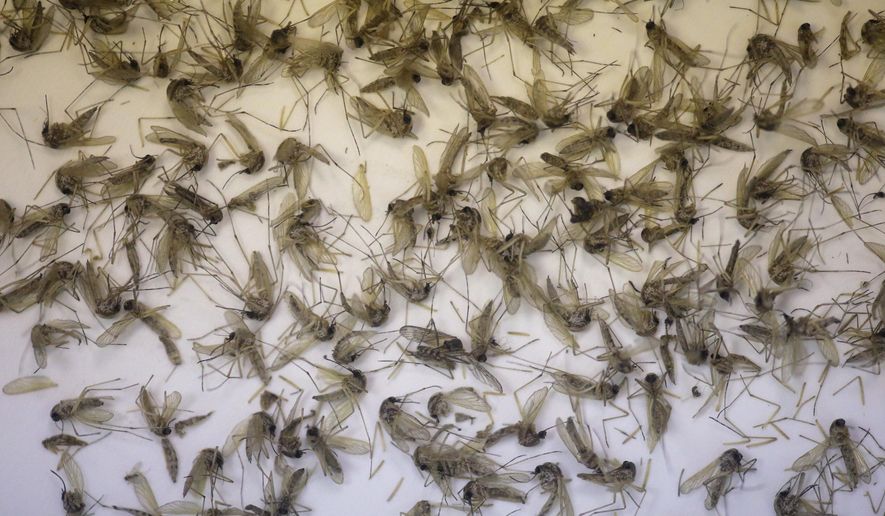The U.S. mosquito population is on the rise, but don’t blame climate change. Blame the ban on the insecticide DDT.
A study published this week in Nature Communications attributed the decay of DDT concentrations as well as urbanization to an increase in mosquitoes over the past 50 years.
“Mosquito populations have increased as much as tenfold, and mosquito communities have become two- to fourfold richer over the last five decades,” the paper said. “These increases are correlated with the decay in residual environmental DDT concentrations and growing human populations, but not with temperature.”
The analysis, conducted by researchers from Rutgers, the University of California, Davis and the University of California, Santa Cruz, flies in the face of statements by environmental groups linking warmer temperatures to mosquito-borne ailments like the West Nile and Zika viruses.
“Surprisingly, despite increases during the last five decades, annual average temperature was non-significant in most analyses for all three regions, and very weak in the single analysis in which it was significant, and temperature was never significant without DDT in the model,” said the study.
The research examined mosquito data going back eight decades in California, which saw a tenfold mosquito surge, and six decades in New Jersey and New York.
In 1972 the Environmental Protection Agency banned DDT amid alarm over its impact on mosquito-eating wildlife, particularly birds and raptors.
Environmental groups have for years warned that warmer temperatures and increased rainfall may be driving mosquito-borne diseases. “Climate Change Bites: As temperatures rise, mosquitoes and ticks thrive. And so do the diseases they carry,” said a Dec. 31 post by the National Resources Defense Council.
“The links between mosquitoes and temperature are scientifically clear, and it’s possible that climate change may now be playing a role in the spread of the Zika virus, a disease suspected of causing serious birth defects,” said Environmental Defense Fund climate scientist Ilissa Ocko in a Feb. 18 post.
Citing research by the Yale School of Public Health, EarthTalk reported that “the onset of human-induced global warming is likely to increase the infection rates of mosquito-borne diseases like malaria, dengue fever and West Nile virus by creating more mosquito-friendly habitats.”
The July 2013 column in E: The Environmental Magazine was headlined, “Mosquito-borne illnesses on the uptick — thanks to global warming.”
In the latest study, however, scientists said that previous research failed to take into account the impact of DDT and land use.
“Although many studies have found positive correlations between temperature and insect populations, most have been limited in temporal scope to the past five decades and nearly all of these studies have ignored the influence of land use or anthropogenic chemical use,” said the paper.
The study also said that population growth had resulted in mosquitoes expanding their habitat to urban areas.
“While our correlative analyses suggested that DDT was the strongest driver of mosquito populations overall, other factors, such as land use, that have changed monotonically over the last century, were also important in explaining patterns of change in mosquito communities,” the paper said.
International debate over the use of DDT has raged for decades. In 2006 the World Health Organization (WHO) reversed its 30-year phase-out of the insecticide by recommending indoor spraying in African nations beset by epidemics of malaria, a potentially deadly mosquito-borne disease.
In 2015 WHO reported an estimated 214 million cases of malaria and 438,000 deaths, about 90 percent of those in sub-Saharan Africa.
The Centers for Disease Control and Prevention reported 43,937 cases of West Nile virus from 1999 to 2015, with 1,911 deaths. This year, as of Dec. 6, 1,622 cases have been found in 47 states, resulting in 84 deaths.
• Valerie Richardson can be reached at vrichardson@washingtontimes.com.




Please read our comment policy before commenting.